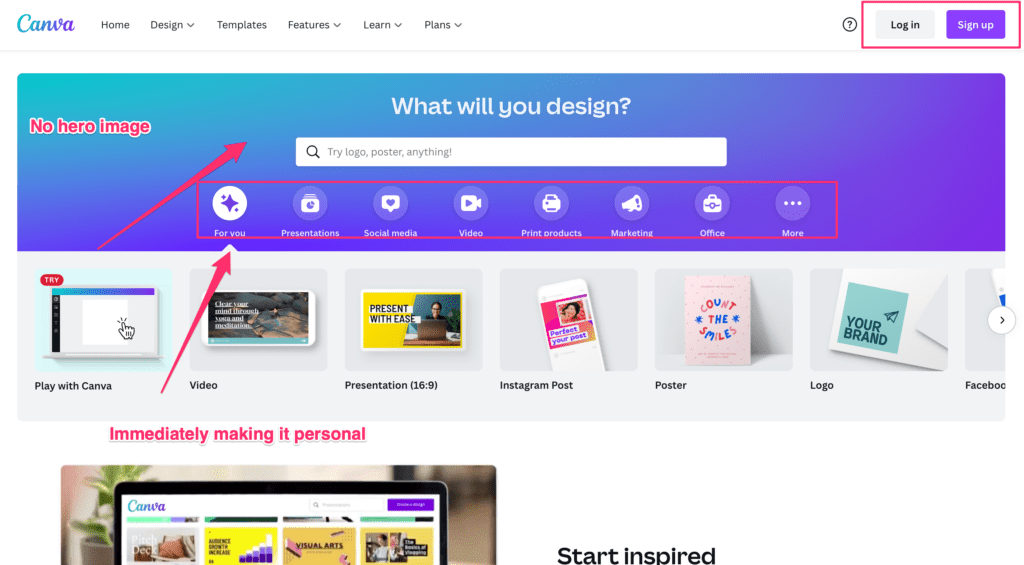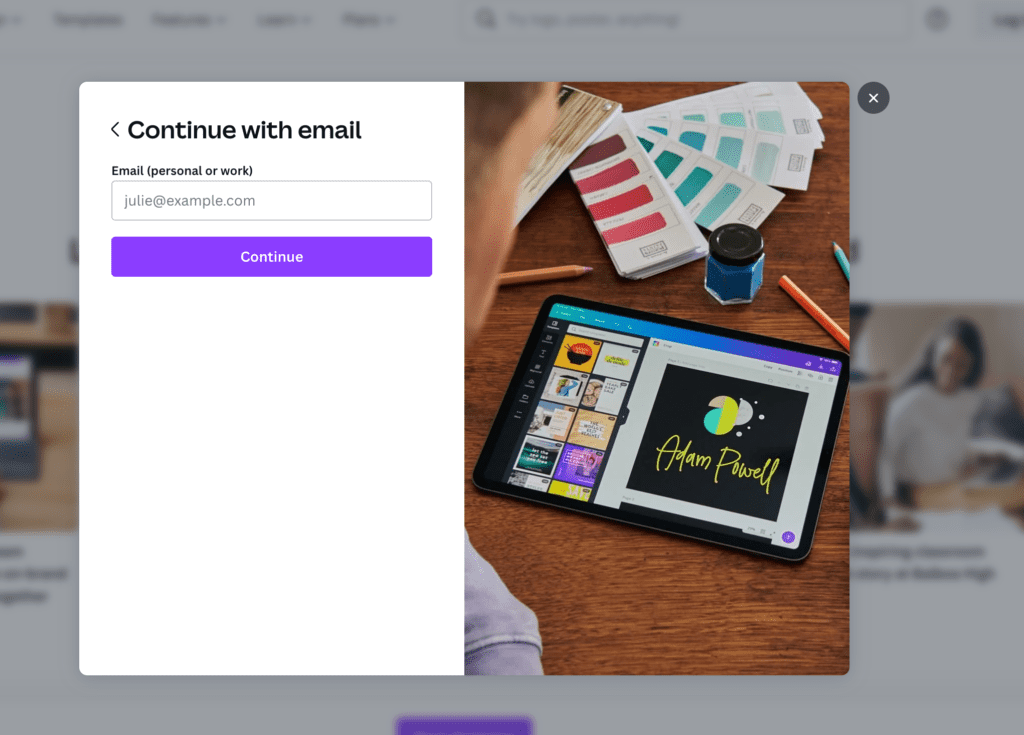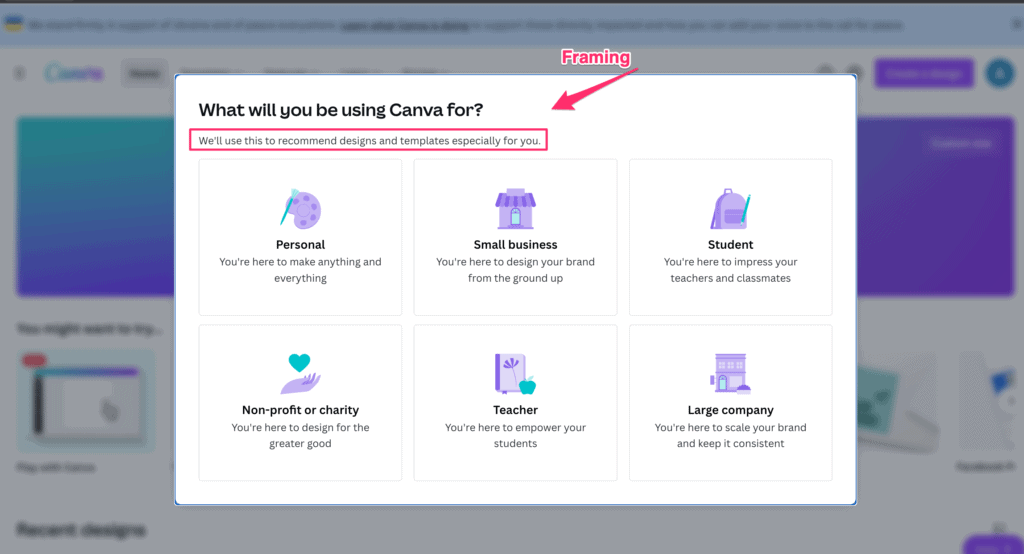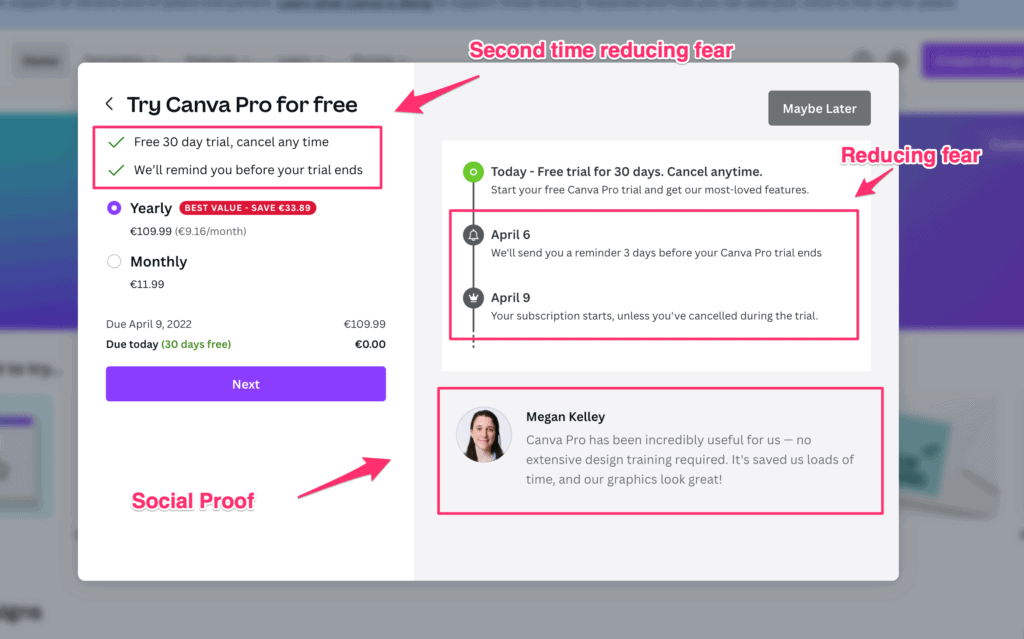That was the question I had when I was looking at inspiring B2C SaaS companies. This is the first part of the two series about Canva’s growth.
Two Teenagers pitched 100+ VCs with no success.
Instead, they bootstrapped their startup to millions in profits until VCs came calling.
The crazy part?
Today the company is worth over $40Bn and they have full control. Here’s a story about Canva and its growth.
_________________
Before moving on, if you are in DTC or Paid Social Marketing, then join 4000+ marketers and founders in this newsletter. It’s free, and you’ll learn the latest marketing tactics:
_________________
Melanie Perkins, at the age of 19, a graduate of psychology and communications, had no idea how startups work.
But she always had a passion for design. In 2008, I was teaching design programs part-time. Then, she started with a product called Fusion Books – an innovative online publishing system that enables people to create stylish and professional yearbooks quickly and easily even if they have had no publishing experience.
For the first 5 years, she only focused on making a profitable bootstrap business, sold yearbooks to schools, and then something changed in 2012.
She realized there is a gap in the market. The world is moving to cloud systems and the design publishing industry is broken. She was making designs on Microsoft Publishers and found out that:
- There is no easy-to-use product and you need training for Adobe Photoshop.
- Everyone wants to design (not just specialists)
- It has to support an end to end from design to publishing on the paper (consolidation)
She found a genuine problem and a BIG category problem to solve with the publishing market.
The main idea was to democratize design for everyone.
This Fusion Books idea had a patent for drag and drop designer that was the first time ever used. It made it easy for students, teachers, and literally everyone to design on the go.
This was the time when she founded Canva in 2012 with her then-fiance, and now husband.
Many folks and she has also covered building stories – You can find it here (worth the read btw).
Why is it so interesting?
Well, until 2016, they did not invest in marketing and solely focused on word of mouth.
2012 to 2016 (Word of Mouth)
Some mental models we can learn from here.
Go niche before going big
From 2007, she initially focused on the education market (schools, teachers, and students) – which is still their big audience. And, Canva only focused on the Australian market instead of going global.
Word of mouth on autopilot
In 2014, she already had 800,000 users within 2 years of the launch. She built a product that was:
a) easy to use (turn beginners to pros)
b) needed by everyone (I learned photoshop in 2008 and not everyone wanted to learn photoshop)
c) Influencer marketing
Wait, influencer marketing? Yes, in 2012 she used influencer marketing without knowing the term.
Social media marketers & bloggers became her sellers
She cold emailed all the bloggers and social media marketers (her second big audience) to try the platform. Since they were using digital designs every day in their job. It was super easy to give a free product. To this date, I still see Tiktokers are sharing Canva hacks.
Freemium product for masses
Canva quickly learned from the mobile app market, 1-2% of your app actually becomes users. It quickly had huge adoption. They were acquiring users for free and selling them pro packages with stock images, designs, icons, and vectors – genius move?
Freemium version of Canva in 2013 looked like this –they stole a growth hack to give free username – CTA (reserve):
Canva now
Content marketing that educates at scale
In 2014, Canva launched a design school. Canva knew from the beginning that to really democratize publishing and design, they need to teach design. Nobody learns design in school properly. Canva took a bet in educating its audience with fonts, layouts, background, and whatnot.
This created another growth loop – the more people learned from Canva, they liked, trusted, and considered Canva an authority. This results in more customers.
Mental model: empower your current and future customers with education. They’ll return the favor with more word of mouth.
2016 Onwards – The inflection point
You can see in this picture they started focusing on Search in late 2016.
The start of search domination
They focus on transactional queries, discovery landing pages, create landing pages, and use-cases pages.
They understand user intent so well that they almost rank on most queries.
There are four key types of online search intent:
Informational: Looking for information (e.g., “how to design X?”)
Navigational: Looking to get somewhere specific (e.g., “Canva blog”)
Transactional: Looking for an asset to buy, use or download (e.g., “create invitation”)
Investigational: Trying to compare assets (e.g., “Canva vs. Adobe Spark”)
This image from foundation inc describes their strategy succinctly so well.
They even acquired backlinks overtime to keep getting credibility in Google’s eyes.
Canva’s search team is so agile they keep creating new content as folks search for something specific. For example, during the pandemic, everyone wanted virtual zoom backgrounds.
Canva’s team quickly iterated and created a zoom background library for folks to use it.
If you really want to dive deeper into Canva’ SEO strategy (you should) – Foundation Inc has done a great job at it.
Partnership to go farther together (If you want to go fast, go alone; but if you want to go far, go together.)
Canva has country-based partnership managers who manage affiliates, technology partners, and big companies like FedEx and Samsung. They recently partnered with 42 different companies to go deeeeep.
Tech integration is critical for users to use it in context so they partnered with Hubspot, Pandadoc, Bukalapak, Helppier, Wattpad, and LiveTiles.
to go farther together. Canva has more than 33 country-based partnership managers. Explore a country with a local partnership manager. His/her job is to convert existing content into the local language and find bigger partners. It’s a lean way to grow.
Learn more about their partnership strategy here
2020 to-date
Boosting growth with paid ads
In 2020, Canva has invested in paid search ads with 3000 keywords & phrases on Google Ads, and that received around 500,000 clicks that cost $1.5mn. It works out to be $3 per click vs in the industry standard $6.94.
But apparently, that’s just a tiny number compared to their other traffic sources.
Canva invested in paid search with these keywords if you are curious.
Most of these keywords are focused on:
- Jobs to be done (logo maker)
- Transactional queries (infographic template)
- Commercial relevant (logo generator)
And here are some paid search ad copy for you to dive on:
Although, paid search is only 3% — but these terms directly get them customers who convert.
Funny, how Canva responds to alternative keywords 😂 (I agree)
Canva’s Product Led Growth Strategy to Attract 76% Direct Traffic and Converting Free to Paid
The onboarding covers UX, and in-app help. Canva’s main job is to make it seamless to go through it.


1 – Exploit the sign-in page.
Why it works:
– They state who Canva is for: “loved by beginners and experts, teams and individuals.
– The image complements what Canva is about—helping design creatives
Protip: Adding Google and Facebook sign-up can increase the conversion up to 20%.

2 – Your ask should reduce the barrier to entry.
Canva says it does not matter which email I use. Phew!

3 – Every action should add value to your user. Canva started helping me with the password.

4 – Canva wants some information from you but they do it effectively by “framing it right”.

Framing: The way information is presented affects how users make decisions.
5 – Nudged principle to start a limited “free trial” instead of a freemium version on the next screen.

Nudge: People tend to make decisions unconsciously. Small cues or context changes can encourage users to make a certain decision without forcing them. This is typically done through priming, default option, salience and perceived variety.
The call to action is a free trial. I am sure most people click on it without thinking.
5 – The next screen has so much to learn from. It’s all about reducing the fear of getting scammed.

6 – I discard the paid trial with “Maybe Later” and Canva hits me with more value and reciprocity. They want my email in exchange for great design tips, trending templates and so much more.
That’s all with the welcome screens onboarding.
There’s more to learn from Canva but you can already apply this to your business.
Hope this helps you understand their growth trajectory. Some key mental models to remember:
- Go niche before going broad
- Make your customers the best salespeople
- A product that sells itself: Make your product so good that it sells with WOM
- Offer freemium to provide value first
- Educate first, ask later: Educate on the topic your company is great at
- Boost education with SEO: focus on search, use-cases, and content hubs
- Partnership to fo father: Never underestimate the power of partnerships or “influencer marketing”
- Drive growth with paid search with high intent searchers who are looking for you right now
- Always on the lookout: Be reactive to market needs with events based on your product (zoom backgrounds)
- Use psychology to increase free to paid conversion.


